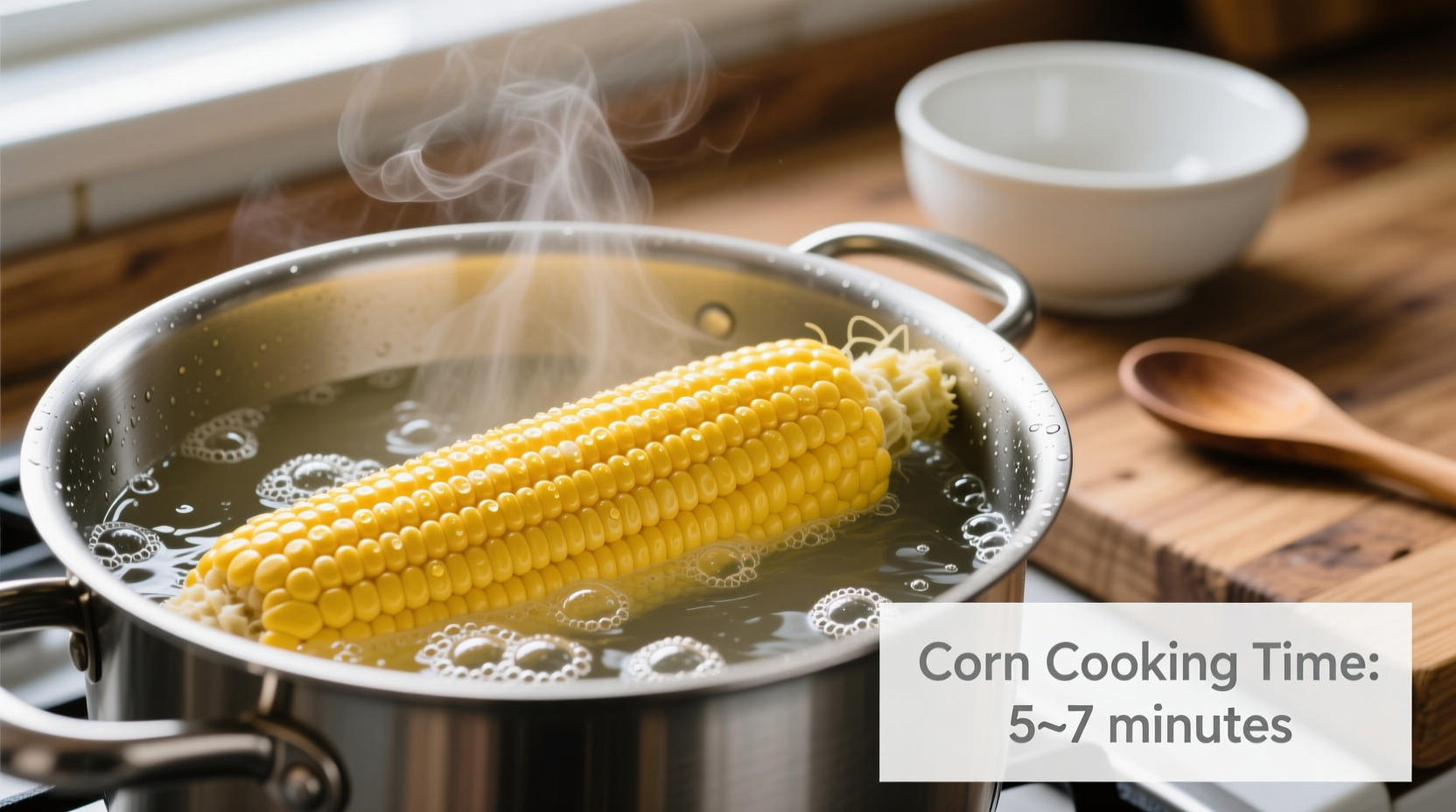Perfectly cooked corn takes 5-7 minutes when boiling fresh ears, 7-10 minutes when steaming, and 15-20 minutes when grilling. Frozen corn requires 8-10 minutes boiling. Overcooking makes kernels tough and chewy - timing is crucial for optimal texture and sweetness.
Nothing beats the sweet, crisp-tender perfection of properly cooked corn on the cob. But getting that ideal texture requires precise timing - too short and it's starchy, too long and you've sacrificed that fresh-off-the-cob sweetness. Whether you're boiling, grilling, or steaming, understanding the exact cooking times based on corn type and method makes all the difference between mediocre and mouthwatering results.
Why Timing Matters for Perfect Corn
Corn contains natural sugars that convert to starches when exposed to heat. The sweet spot? Cooking just long enough to make kernels tender while preserving maximum sweetness. According to the USDA Food Safety and Inspection Service, vegetables like corn require sufficient heat treatment to ensure safety while maintaining quality. Undercooked corn remains starchy and tough, while overcooked corn becomes mushy and loses its characteristic sweetness as sugars break down.
Exact Cooking Times by Method
| Cooking Method | Fresh Corn | Frozen Corn | Canned Corn |
|---|---|---|---|
| Boiling | 5-7 minutes | 8-10 minutes | 2-3 minutes |
| Steaming | 7-10 minutes | 10-12 minutes | 3-4 minutes |
| Grilling (with husk) | 15-20 minutes | Not recommended | N/A |
| Grilling (without husk) | 8-12 minutes | Not recommended | N/A |
| Pressure Cooking | 2-3 minutes | 3-4 minutes | 1 minute |
How to Prepare Corn for Cooking
Proper preparation affects cooking time and final texture. For fresh corn:
- Peel back husks and remove silk completely - residual silk burns during cooking
- Soak corn in cold water for 15 minutes before grilling to prevent drying
- For boiling, start with cold water rather than boiling water to ensure even cooking
- Never add salt to boiling water - it makes kernels tougher (acid like lemon juice is fine)

Factors That Change Cooking Time
Several variables affect how long corn needs to cook:
Kernel Maturity
Younger "milk-stage" corn (when kernels release milky liquid when pierced) cooks faster than mature corn. The Cornell University Cooperative Extension notes that corn harvested at peak ripeness contains 15-18% sugar, which rapidly converts to starch after picking. Fresher corn requires slightly less cooking time.
Water Temperature
Starting corn in cold water versus dropping into boiling water changes cooking dynamics. Cold-start method (adding corn to cold water, then bringing to boil) takes about 2 minutes longer but yields more even cooking throughout the ear.
Altitude Adjustments
At elevations above 3,000 feet, water boils at lower temperatures, requiring additional cooking time. Add 1-2 minutes to standard times for every 1,000 feet above sea level according to FDA Food Code guidelines.
How to Tell When Corn Is Perfectly Cooked
Don't rely solely on the clock - use these visual and tactile indicators:
- Color: Kernels turn from pale yellow to vibrant golden
- Texture: Press a kernel with fingernail - it should feel tender but still slightly firm
- Steam test: When removed from heat, corn should steam lightly for 30-60 seconds
- Kernel test: Cut a kernel open - center should be creamy, not starchy or watery
Overcooked corn shows these warning signs: extremely soft texture, noticeable shrinkage of kernels, cloudy cooking water, and diminished sweetness.
Pro Tips for Better Corn
Professional chefs use these techniques to maximize flavor:
- Never boil corn longer than 7 minutes - it's essentially blanching, not cooking
- Add a teaspoon of sugar to boiling water to enhance natural sweetness
- Grill corn in husk for steamed effect, or remove husk for charred flavor
- Immediately plunge cooked corn into ice water to stop cooking process
- Store uncooked corn in refrigerator with husks on to preserve sugars
Common Corn Cooking Mistakes
Avoid these frequent errors that ruin corn texture and flavor:
- Overcooking: The #1 mistake that turns sweet corn into tough, starchy disappointment
- Salt in water: Makes kernels tough by accelerating pectin breakdown
- Peeling too early: Husks protect corn from drying out during cooking
- Not removing all silk: Burnt silk creates unpleasant flavor during grilling
- Cooking old corn: Corn loses 50% of its sugar within 24 hours of harvest
Special Considerations for Different Corn Types
Not all corn varieties cook the same. Sweet corn (the type sold for eating) requires different timing than field corn or popcorn:
- Yellow sweet corn: Standard cooking times apply (5-7 minutes boiling)
- White sweet corn: Slightly more delicate - reduce time by 1 minute
- Bicolored corn: Treat like yellow corn, but check 1 minute early
- Heirloom varieties: Often more tender - start checking at 4 minutes
Remember that corn continues cooking from residual heat after removal from water or grill. Always remove corn 30-60 seconds before you think it's done.
Storing and Reheating Leftover Corn
Proper storage maintains texture for leftovers:
- Refrigerate cooked corn in husks for up to 3 days
- Reheat in microwave with damp paper towel for 60-90 seconds
- Never reboil cooked corn - it becomes tough
- For frozen corn, thaw in refrigerator before reheating
When reheating, add moisture to prevent drying - a light brush of butter or mist of water helps maintain texture.
Perfect Corn Timing Cheat Sheet
Bookmark these quick-reference times for your next corn cookout:
- Boiling fresh corn: Water to boil + 5 minutes
- Steaming fresh corn: 8 minutes from steam emergence
- Grilling with husk: 18 minutes turning every 5 minutes
- Grilling without husk: 10 minutes with occasional turning
- Pressure cooking: 2 minutes at high pressure
- Frozen corn boiling: 9 minutes from cold water start











 浙公网安备
33010002000092号
浙公网安备
33010002000092号 浙B2-20120091-4
浙B2-20120091-4